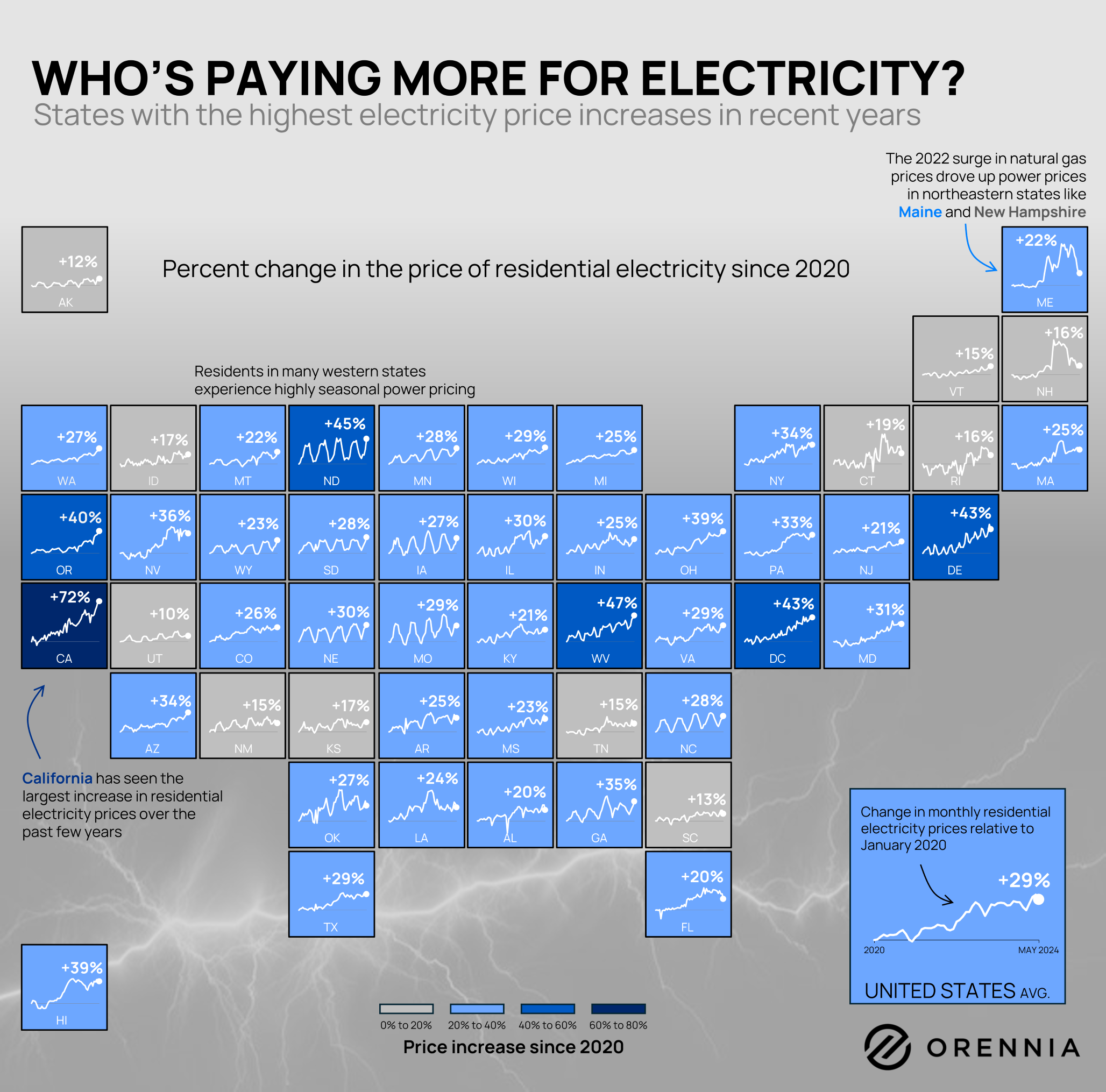
Since 2020, residential power prices in the US have jumped, driven by a combination of factors that vary by region but share some common threads. The impact has been felt across the country, with some regions experiencing sharper price hikes than others due to local energy policies, fuel costs, infrastructure issues, and broader economic pressures.
Between 2020 and 2024, the national average residential electricity price rose by ~30%. This increase can be attributed to several factors:
- Rising fuel costs: The cost of natural gas, which powers a significant portion of U.S. electricity generation, surged during this period. Geopolitical events, supply chain disruptions, and increased global demand contributed to higher prices.
- Inflation: The broader inflationary environment in the country has driven up the cost of goods and services across the board, including energy. Increased labor and material costs have made energy infrastructure projects more expensive, further contributing to rising electricity rates.
- Grid modernization and infrastructure investments: Utilities have been investing heavily in grid modernization to improve reliability and integrate renewable energy sources. While these investments are necessary for long-term sustainability, they have led to higher rates in the short term as utilities seek to recoup costs.
Regional Highlights
The Northeast has experienced some of the steepest increases in residential power prices. The region is heavily dependent on natural gas, and price volatility in this fuel has directly impacted electricity rates. Aging infrastructure also required significant upgrades.
California and other Western states have also seen notable increases in residential power prices, with California experiencing price hikes of more than 70%. Utilities have been investing in wildfire prevention and mitigation measures, which have led to increased operational costs. California’s aggressive renewable energy goals have required substantial investment in grid upgrades and energy storage.
The Midwest has seen more moderate increases, generally in the range of 15-30%. However, some areas, particularly those heavily reliant on coal like West Virginia, have seen sharper rises. This is due to coal plant retirements and the transition to cleaner energy sources have led to increased costs as utilities invest in new infrastructure. Severe weather, including cold snaps and storms, has occasionally disrupted supply and driven up prices temporarily.
The Southeast has generally seen smaller increases, often around 10-20%, but certain areas have been exceptions. Rapid population growth in states like Georgia and Florida has increased demand for electricity, contributing to higher prices.



